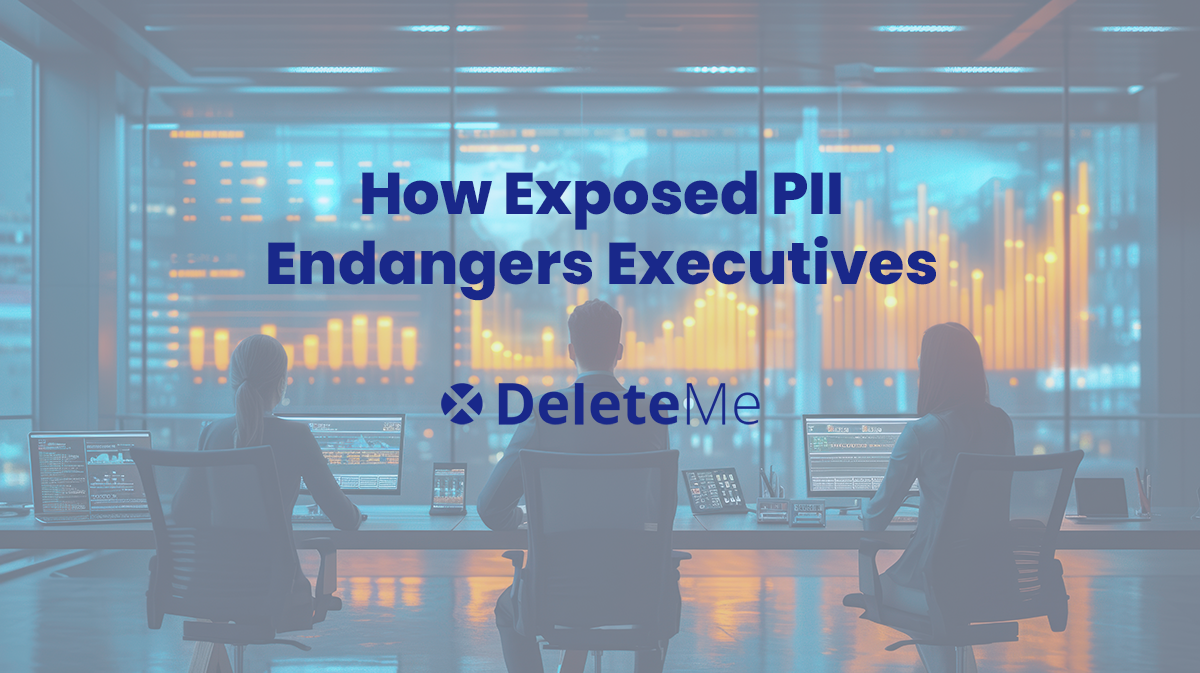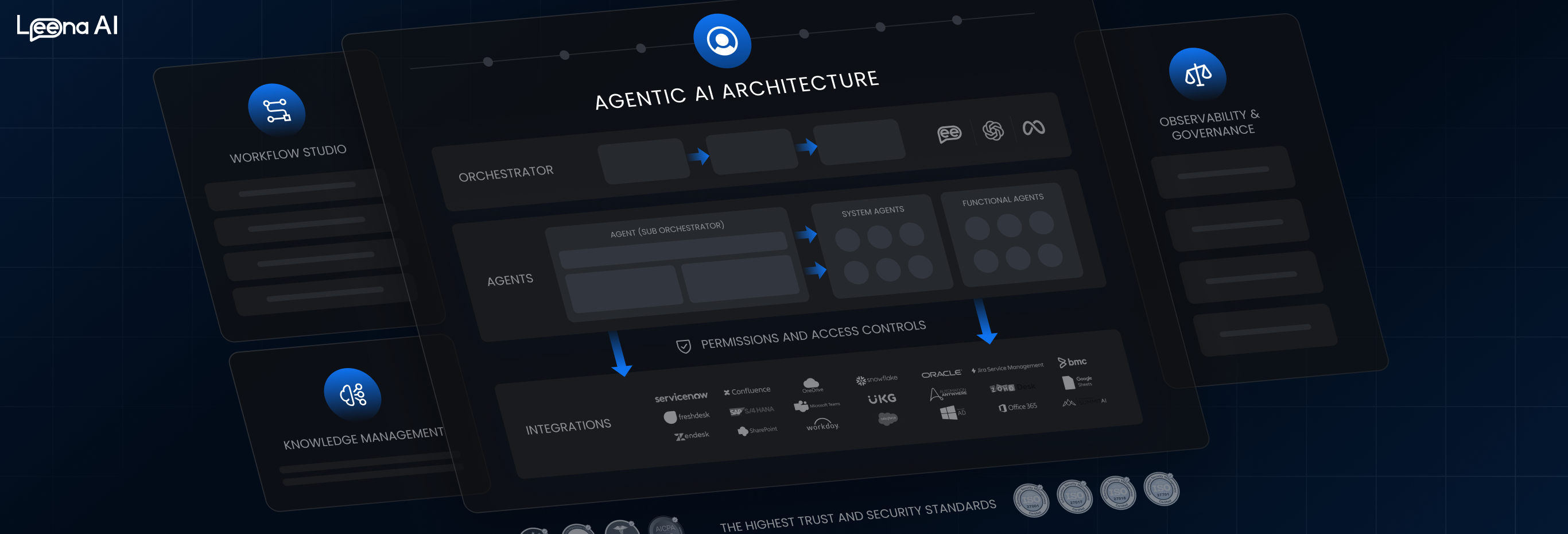Executive Exposure: How Publicly Available Personal Data Endangers Cybersecurity in 2025
Executive protection isn’t just a physical security issue—it's a cyber one.
In 2025, threat actors increasingly rely on open-source intelligence (OSINT)—particularly personal data sourced from data brokers, public records, and social media—to target executives with precision. This digital exhaust has become a high-value attack vector. It fuels phishing campaigns, credential compromise, identity theft, and more.
At DeleteMe, we've analyzed thousands of executive privacy profiles and found that executive-level employees are consistently 25–30% more exposed online than the general workforce. That differential—often invisible to traditional enterprise security controls—poses a measurable risk to both individual safety and organizational integrity.

Where Executive Exposure Begins
The data that powers modern cyberattacks often comes from a single, under-defended vector: the open web.
Public-facing executives are frequently listed on company websites, quoted in the media, and featured on social media platforms like LinkedIn. That visibility is compounded by data broker platforms, which aggregate, enrich, and resell personal data pulled from utility records, credit header data, real estate transactions, and more.
A single executive profile on a data broker site might include:
- Full name, DOB, and family associations
- Current and former home addresses
- Personal and business phone numbers
- Personal and professional emails
- Estimated income and net worth
- Org chart connections
This data is packaged and sold—legally—with little to no buyer scrutiny. The result is that adversaries can uncover detailed personal and contextual information with just a Google search.
How This Exposure Translates to Cyber Risk
CISOs know that executive accounts are among the most privileged in any organization. That makes them priority targets for advanced attackers, who use personal data to sharpen the effectiveness of the following techniques:
1. Social Engineering and Executive Phishing
Executives are 4x more likely than rank-and-file employees to click on malicious links. Attackers use data exposure to personalize spear phishing (or “whaling”) emails and texts—often referencing an executive's colleagues, travel plans, or recent events pulled from social or brokered data.
Even sophisticated MFA implementations fall short when attackers bypass authentication using voice spoofing, MFA fatigue, or SIM-swapping—all made easier by available personal information.
2. Account Takeover (ATO) and Credential Stuffing
C-level accounts are twice as likely to suffer from credential compromise. Personal data like birthdates, family names, and pet names—often used in passwords or security questions—are easily mined from online sources.
Our research shows:
- 25% of executives use birthdates in their passwords
- 11% use company-related strings
- 11% use their own names or variations
When combined with breached credentials and AI-enhanced brute-force tools, this data dramatically lowers the effort and time required for ATO.
3. Deepfakes and AI Impersonation
Voice clones and deepfake video conferencing have shifted from novelty to threat. In one recent incident, a finance employee was tricked into wiring $25 million after attending a fake video call populated by deepfake versions of their executive team.
The data needed to build these forgeries—audio clips, public interviews, LinkedIn photos—are widely accessible.
4. Espionage and Social Engineering via Professional Networks
In one real case, a threat actor built a fake LinkedIn persona with a similar academic and career history to an executive target. After establishing rapport, the attacker convinced the target to share sensitive IP under the guise of a job offer.
Nation-state actors are now known to run LinkedIn operations at scale, with data brokers serving as a goldmine for reconnaissance.
Personal and Physical Threats Amplified by OSINT
Beyond technical compromise, exposed data elevates physical and reputational threats:
- Doxxing and Harassment: Executives targeted for political, financial, or social reasons may have their home address, family details, or phone numbers posted online.
- Swatting and Stalking: In several cases, exposed addresses have led to false police calls and physical surveillance.
- Blackmail: Sensitive personal details have been used to extort executives and even their family members—such as a teen targeted via sexual orientation exposure to install malware at home.
One alarming trend: threat actors now send ransom letters to executives' home addresses with no breach—just intimidation based on real personal data.
What Makes Executive Data So Easy to Find?
The main culprit is the data broker ecosystem. Even organizations with robust executive protection programs typically find their leaders listed on multiple broker sites. This happens because:
- Data is relisted regularly unless continuously suppressed
- New records (mortgages, LLC filings, utilities) are constantly ingested
- Connections between individuals (spouses, children) are algorithmically generated
Manual removal is not scalable. Even security-aware executives can’t keep up with the data refresh cycles of over 190 known broker sites.
Why Traditional Executive Protection Falls Short
Current corporate solutions (email security, social media monitoring, physical protection, etc.) are largely reactive—they intervene after an attack begins.
What’s missing is a preventive layer—a way to eliminate the visibility that enables these attacks in the first place.
That’s why more Fortune 500 security teams are investing in continuous personal data removal as part of their executive security stack.
How DeleteMe Helps Reduce Executive Cyber Risk
DeleteMe is a continuous privacy service that removes personal data from hundreds of online sources—including major data brokers, people search sites, and other OSINT risk vectors.
Here’s how it fits into a proactive cyber risk strategy:
- Attack Surface Reduction: By eliminating high-value personal data, we reduce the precision and success rate of phishing, ATO, and impersonation campaigns.
- Automation at Scale: Our system continuously monitors, opts out, and suppresses data—handling relistings and broker compliance issues in real time.
- Family Coverage: Because many attacks pivot through family members, DeleteMe also protects spouses and dependents to close that exposure loop.
Organizations spend upwards of $500K/year per executive on physical security and threat detection. For a fraction of that, they can eliminate a core enabler of those threats.
Who Should Be Covered?
- C-Suite Executives
- Board Members
- High-Risk Employees (Legal, Finance, Engineering Leads)
- Public-Facing Staff (PR, Marketing, Founders)
- Family Members of High-Profile Individuals
A Final Word to CISOs and CIOs
In 2025, cybersecurity isn't just about locking down networks—it's about reducing visibility across every layer of your digital footprint.
Exposed executive data is an urgent, solvable risk. Attackers can’t target what they can’t find.
DeleteMe helps close the gap between personal data exposure and enterprise security. Let’s talk about how to integrate data removal into your executive protection plan.
Join The GBI Impact Community
Sign up to make an impact and hear about our upcoming events
By registering anywhere on the site, you agree with our terms and privacy policy



